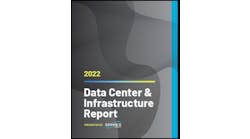Google Building Trans-Atlantic Cable to Boost Its Cloud in Northern Virginia
Google will build its own private subsea cable to manage data traffic between Europe and its huge cloud campuses in Northern Virginia, the company said today. The Dunant cable will provide a high-bandwidth path for Internet traffic from the west coast of France across the Atlantic, landing in Virginia Beach in the U.S.
Once that traffic arrives in Virginia Beach, much of it will be forwarded to Loudoun County in Northern Virginia, where Google is building two large data center campuses to anchor its East Coast infrastructure for Google Cloud. The move reflects Google’s growing focus on Northern Virginia, a cloud stronghold for market leader Amazon Web Services (AWS).
The announcement highlights the growing strategic importance of subsea cables for Google in the cloud wars with rivals AWS and Microsoft. This has been great news for Virginia Beach, which is seeking to build a data center cluster around a landing station for the trans-Atlantic cables landing on its beaches.
Dunant will be the first private trans-Atlantic cable built by a non-telecom company, and is expected to begin carrying traffic in late 2020. Google is working with TE SubCom to design, manufacture and lay the cable for Dunant, which adds network capacity on one of the busiest routes on the Internet. The cable is named for Henri Dunant, the first Nobel Peace Prize winner and founder of the Red Cross.
A Dedicated Route for Google Data
Google’s investment is notable because it Dunant will be a dedicated, private cable. Because of the huge cost of these projects, subsea cables are usually built by consortiums of telecom companies and end users, as is the case with the MAREA cable, which also lands in Virginia Beach and includes Telefonica, Microsoft and Facebook as investors. After partnering on several of its early cable initiatives, Google changed course earlier this year when it announced Curie, a private cable project to connect the West Coast and its South American data center campus in Chile.
“When we build privately, we can choose this route based on what will provide the lowest latency for the largest segment of customers,” said Jayne Stowell, Strategic Negotiator of Global Infrastructure for Google. “In this case, we wanted connectivity across the Atlantic that was close to certain data centers.”
An illustration of the route of Google’s new subsea telecommunications cable. (Image: Google)
In this case, those data centers are part of Google’s Northern Virginia Cloud Region, which the company launched last year in leased space in Data Center Alley in Ashburn. Shortly afterward, the company said it had purchased land for two data center campuses in Loudoun County:
- Google has begun construction on a 91-acre property in Arcola, just west of Dulles Airport, which it purchased for $58 million.
- Google also paid $31 million to acquire a 57-acre property within the Stonewall Business Park near Leesburg, just west of “Data Center Alley” in Ashburn. The company hasn’t disclosed its development timetable for the Leesburg site.
The development sites give Google the ability to dramatically expand its data center infrastructure around Northern Virginia. The two new Google sites are just outside Data Center Alley, but close enough for traffic to reach key Internet intersections in a fraction of a second.
The Google campuses in Northern Virginia are about 220 miles from the Virginia Beach landing site, which will also allow Google to easily route traffic to its existing data center campuses in Lenoir, North Carolina and Goose Creek, South Carolina. Lenoir is about 360 miles from Virginia Beach, while Goose Creek is about 425 miles away.
The Dunant cable. along with Google’s projects in Loudoun County, reflect the huge surge in investment in cloud infrastructure. Hyperscale Internet companies, including the major cloud computing platforms, invested $27 billion in capital expenditures (CapEx) in the first quarter of 2018, according to data from Synergy Research Group, which tracks cloud spending.
Opportunity for Virginia Beach
As these cloud titans focus investment in cables and new routes, it has the potential to reshape how data flows across the ocean, onto the U.S. mainland, and into the cloud. Dunant is the third major subsea cable that will land in Virginia Beach, making the tiny resort town a focal point for speculation about the power of cable landings in data center development.
The MAREA subsea cable emerges from the Atlantic at Virginia Beach, Virginia and heads inland. (Photo: Microsoft)
Several data center projects have been announced in Virginia Beach, which hopes to create a colocation hub near the cable landing station for the MAREA and BRUSA (and now Dunant) cables. Companies planning data centers in Virginia Beach include, Globalinx Data Centers, Telefonica/Telxius, and ACA International.
Last year Virginia Beach slashed its tax rate on computers and data center equipment to $0.40 per $100 of assessed value, matching a reduced rate established in Henrico County last year. The city described the move as “one of many new initiatives Virginia Beach is embracing to welcome data centers to the city.”
In terms of data center development, the big winner has been Henrico County, a suburb of Richmond about 100 miles northwest of Virginia Beach. In October Facebook announced plans to invest $1 billion in a new data center campus in Sandston, which will provide Facebook with easy access to trans-Atlantic data traffic coming from the MAREA cable.
Google says it will continue to invest in growing its cloud infrastructure. “Our investments in both private and consortium cables meet the same objectives: helping users and businesses can take advantage of all the cloud has to offer,” wrote Stowell. “We’ll continue to look for more ways to improve and expand our network, and will share more on this work in the coming months.”






